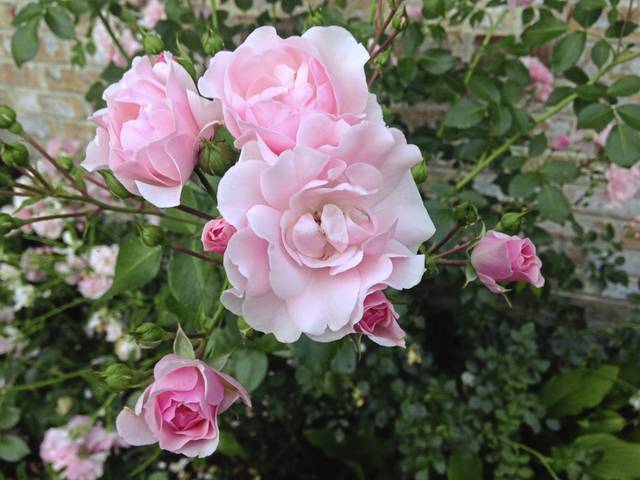https://mirror.triblive.com/lifestyles/jessica-walliser-columns/5-tips-for-getting-those-roses-through-the-winter/
5 tips for getting those roses through the winter

Question: We have several roses growing in our new backyard. The previous owner planted them, so we’re not sure what kind they are. Now that cold weather has arrived, what should we do to care for the plants through the winter?
Answer: It’s difficult to know exactly how best to care for your roses through the winter without knowing what kind of roses you’re growing. Some types of roses are fussier than others and will not survive the winter unscathed without adequate protection. Other roses will survive even the coldest winter temperatures without any issues whatsoever.
Since you don’t know which types of roses are growing in your yard, I suggest offering them maximum protection, just to be safe. Here are a few things you should do to keep your roses healthy and happy.
1. Don’t prune. While it was once standard practice to prune roses in the late autumn, most rose growers no longer do so. Instead, pruning chores are kept until spring, when the gardener can see which stems have survived the winter and which have not. If your roses are taller than about 5 feet, you can prune them down to 3 feet just to keep them manageable, but if they’re shorter than that, leave the canes intact through the winter and do your pruning in the spring. There’s good evidence that this practice helps prevent extensive winter die-back.
2. Pick up the fallen rose leaves. Since many types of roses are susceptible to fungal diseases such as black spot and powdery mildew, collect and discard any fallen rose leaves before winter sets in. These leaves can overwinter fungal spores and easily reintroduce them to next year’s foliage if they’re left in the garden. Bury rose leaves in the compost pile or burn them.
3. Protect the crown of the plant. If you knew for sure that your roses were modern, hardy roses, you could ignore this step entirely. Most modern roses are not grafted; instead, they are grown on their own rootstock. Since the grafting point is the most vulnerable to freezing temperatures, the base of the plant should be insulted with several inches of mulch for the winter. New varieties of roses that aren’t grafted have no need for this extra insulation. But, without knowing which type you have, it’s better to be safe and layer 3 to 5 inches of shredded bark mulch, shredded leaves, straw or compost up and over the base of the plant. You’ll remove it completely come spring when the insulation is no longer needed. You may need to surround the base of the plant with a ring of chicken wire to keep the mulch in place.
4. Keep the deer out. If you have deer in your neighborhood, you may want to protect your rose bushes with a layer of deer netting or keep them sprayed with a commercial deer repellent through the winter months.
5. Do not feed. Never fertilize roses later than Aug. 1. Doing so encourages new, tender growth that may not have time to toughen up before cold weather arrives. This leads to more winter dieback. Rose fertilization should begin in April and continue through July. I recommend using an organic granular fertilizer and scratching it into the soil around the base of your roses once a month.
Copyright ©2025— Trib Total Media, LLC (TribLIVE.com)
